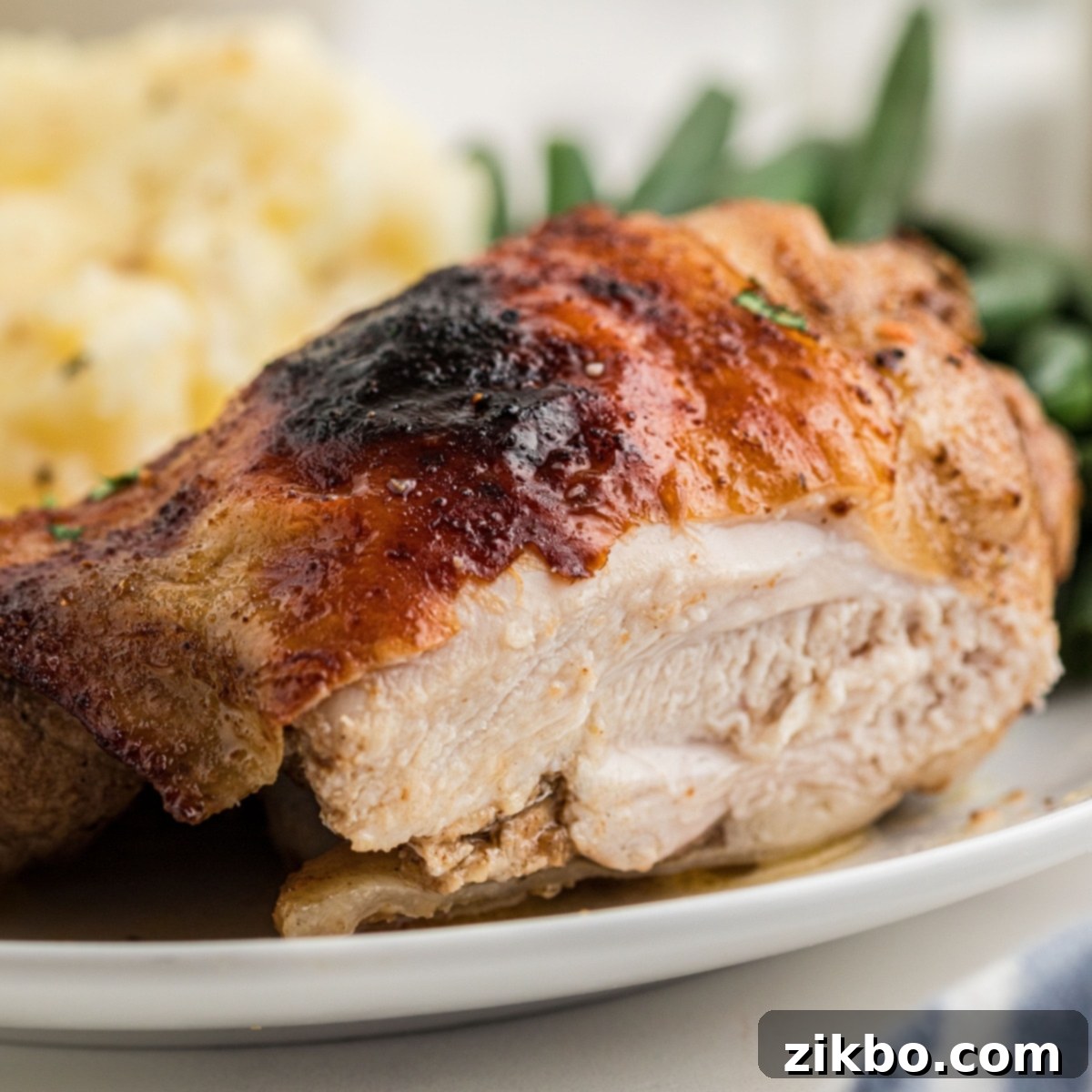The Ultimate Easy Chicken Marinade: Achieve Flavorful, Juicy Chicken Every Time
Unlock the secret to consistently tender, succulent, and incredibly flavorful chicken with this **easy chicken marinade recipe**! Say goodbye to dry, bland chicken and hello to a culinary experience that will delight your taste buds every single time. Crafted with simple, readily available ingredients like rich olive oil, savory Worcestershire sauce, and a thoughtful blend of your favorite seasonings, this homemade chicken marinade is a game-changer for any meal.
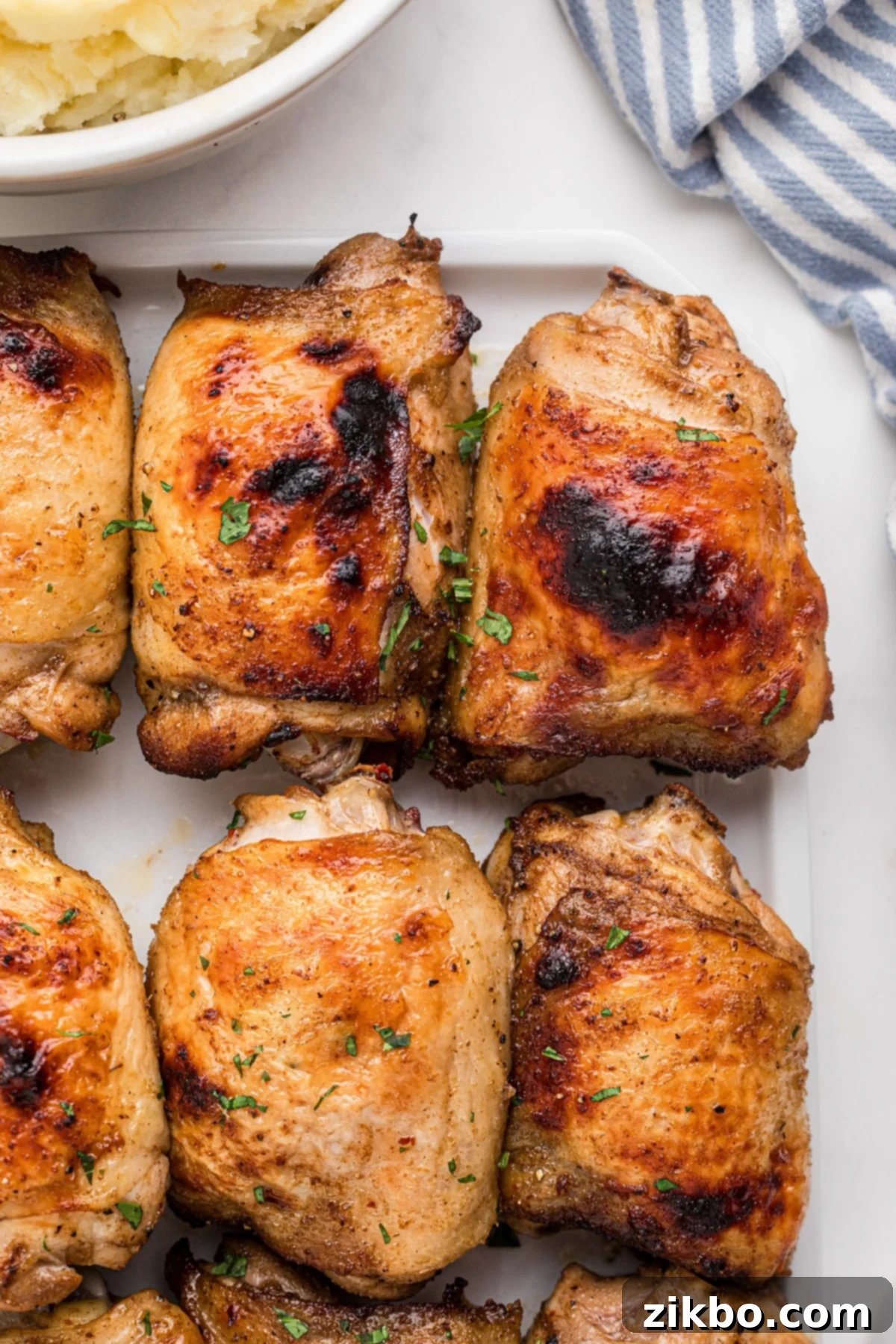
Are you on the hunt for the best chicken marinade recipe that promises maximum flavor with minimal effort? Your search ends here! This foolproof recipe is designed to infuse your chicken with an irresistible depth of flavor, making it perfect for grilling, baking, or air frying. It’s truly a must-have in your recipe collection.
This versatile marinade isn’t just for chicken; it’s the perfect way to elevate a variety of your favorite protein cuts, offering a boost of deliciousness to **so many other options** as well. Whether you’re planning ahead and want to prep your meat the day before for a stress-free dinner, or you’re simply looking to add a burst of flavor just before you start grilling, baking, or air frying – this incredibly easy marinade recipe is your ideal solution.
Imagine tender chicken breasts, perfectly charred chicken thighs, or juicy chicken wings, all infused with a harmonious blend of sweet, savory, and tangy notes. This marinade creates a beautiful crust while keeping the interior moist and tender, ensuring a delightful eating experience with every bite. It’s the ultimate secret weapon for transforming everyday chicken into an extraordinary meal.
Unleash Flavor: What Can You Use This Marinade For?
The beauty of this easy chicken marinade lies in its incredible versatility. It’s designed to complement a wide range of proteins and cooking methods, making it a staple for any home cook. Here are just a few ways you can put this fantastic marinade to work:
- Chicken Breasts: Transforms lean chicken breasts into incredibly juicy and flavorful meal components.
- Chicken Thighs: Enhances the natural richness of chicken thighs, making them extra tender and delicious.
- Chicken Wings or Legs: Perfect for game day snacks or a casual family dinner, delivering crisp skin and moist meat.
- Chicken Tenders: Ideal for quick meals, salads, or kid-friendly dishes, ensuring every bite is packed with flavor.
- Any Cut of Chicken: Works wonderfully with boneless, skinless chicken breasts, as well as bone-in, skin-on cuts, providing consistent deliciousness.
- Grilling: Creates a beautiful char and keeps the chicken moist on the grill.
- Baking or Roasting: Infuses flavor and helps achieve a golden-brown finish in the oven.
- Air Frying: A fantastic way to get crispy, flavorful chicken with less oil.
- Chicken Bites/Skewers: Perfect for appetizers or adding to stir-fries and pasta.
- Pork: Excellent for pork chops, tenderloins, or even pork shoulder, adding a robust flavor profile.
- Salmon: While primarily a chicken marinade, its balanced flavors can surprisingly enhance the taste of fatty fish like salmon.
- Steak Marinade: Don’t hesitate to use it as a steak marinade for an unexpected savory twist!
No matter your preferred cut of meat or cooking method, this marinade will ensure your dish is brimming with flavor and moisture. It’s truly a one-size-fits-all solution for delicious protein.
Essential Ingredients for the Best Chicken Marinade
Crafting the perfect marinade doesn’t require a long list of exotic ingredients. This recipe relies on a few pantry staples that work in harmony to deliver maximum flavor and tenderness. Each ingredient plays a crucial role in creating a balanced and deeply satisfying marinade:
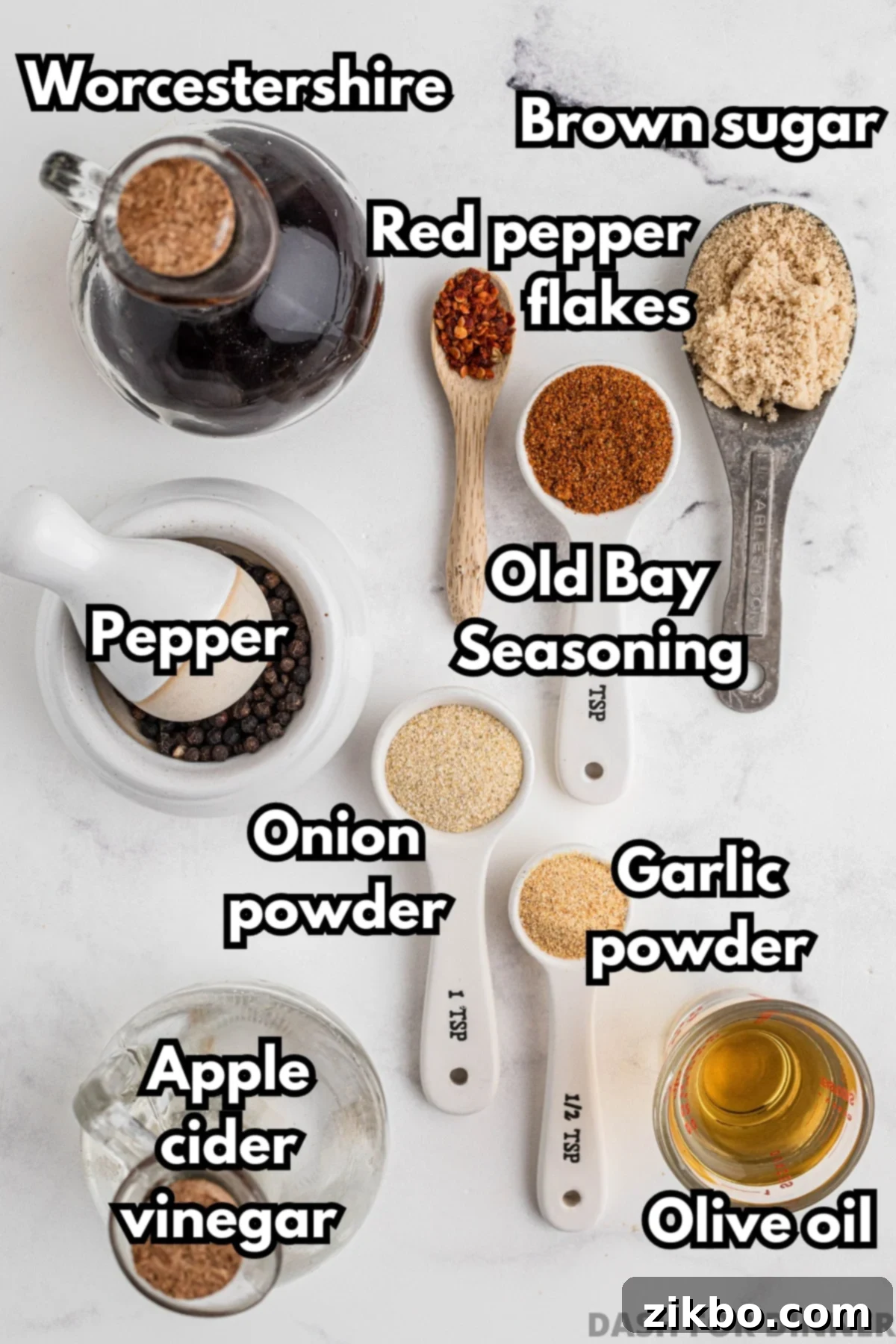
- Olive Oil: The foundation of our marinade, olive oil helps to carry fat-soluble flavors into the chicken and keeps it moist during cooking. It also prevents the chicken from sticking to the grill or pan.
- Apple Cider Vinegar: This acidic component is key for tenderizing the chicken by breaking down muscle fibers. It also adds a pleasant tang and brightness that cuts through the richness of other ingredients, balancing the flavor profile.
- Worcestershire Sauce: A powerful flavor enhancer, Worcestershire sauce brings a deep, umami-rich, savory, and slightly sweet note to the marinade. Its complex profile includes hints of tamarind, anchovies, and spices, adding incredible depth.
- Brown Sugar: Provides a touch of sweetness that balances the acidity and savory elements. More importantly, brown sugar helps in caramelization during cooking, leading to a beautiful golden-brown crust and enhanced flavor, especially when grilling or baking.
- Seasonings: This carefully chosen blend delivers robust flavor.
- Onion Powder: Adds a foundational aromatic sweetness without the texture of fresh onion.
- Garlic Powder: Provides a pungent, savory depth that is a classic complement to chicken.
- Red Pepper Flakes: Introduces a subtle warmth and a gentle kick, elevating the overall taste without overwhelming it. Adjust to your preferred spice level.
- Old Bay Seasoning: A unique blend of herbs and spices (like celery salt, paprika, and black pepper) that offers a distinct, savory, and slightly spicy flavor, synonymous with delicious seafood and, as you’ll discover, fantastic with chicken.
- Black Pepper: A universal spice that adds a sharp, woody note and a subtle heat.
Tools and Equipment for Marinating Success
You don’t need fancy gadgets to make this marinade work. Just a few basic kitchen tools will suffice:
- Freezer bag (or large bowl): For mixing the marinade and thoroughly coating the chicken. Freezer bags are great for efficient marinating and easy cleanup.
- Baking rack, grill, or air fryer: Depending on your chosen cooking method.
- Tongs: Essential for handling raw and cooked chicken safely and efficiently.
- Meat thermometer: Crucial for ensuring your chicken is cooked to a safe internal temperature and remains juicy, preventing overcooking.
For precise measurements and a comprehensive list, please refer to the detailed recipe card at the bottom of this post.
How to Make The BEST Chicken Marinade & Marinate Your Chicken
Preparing this incredibly flavorful chicken marinade is remarkably straightforward. Follow these simple steps to ensure your chicken is perfectly seasoned and ready for cooking:
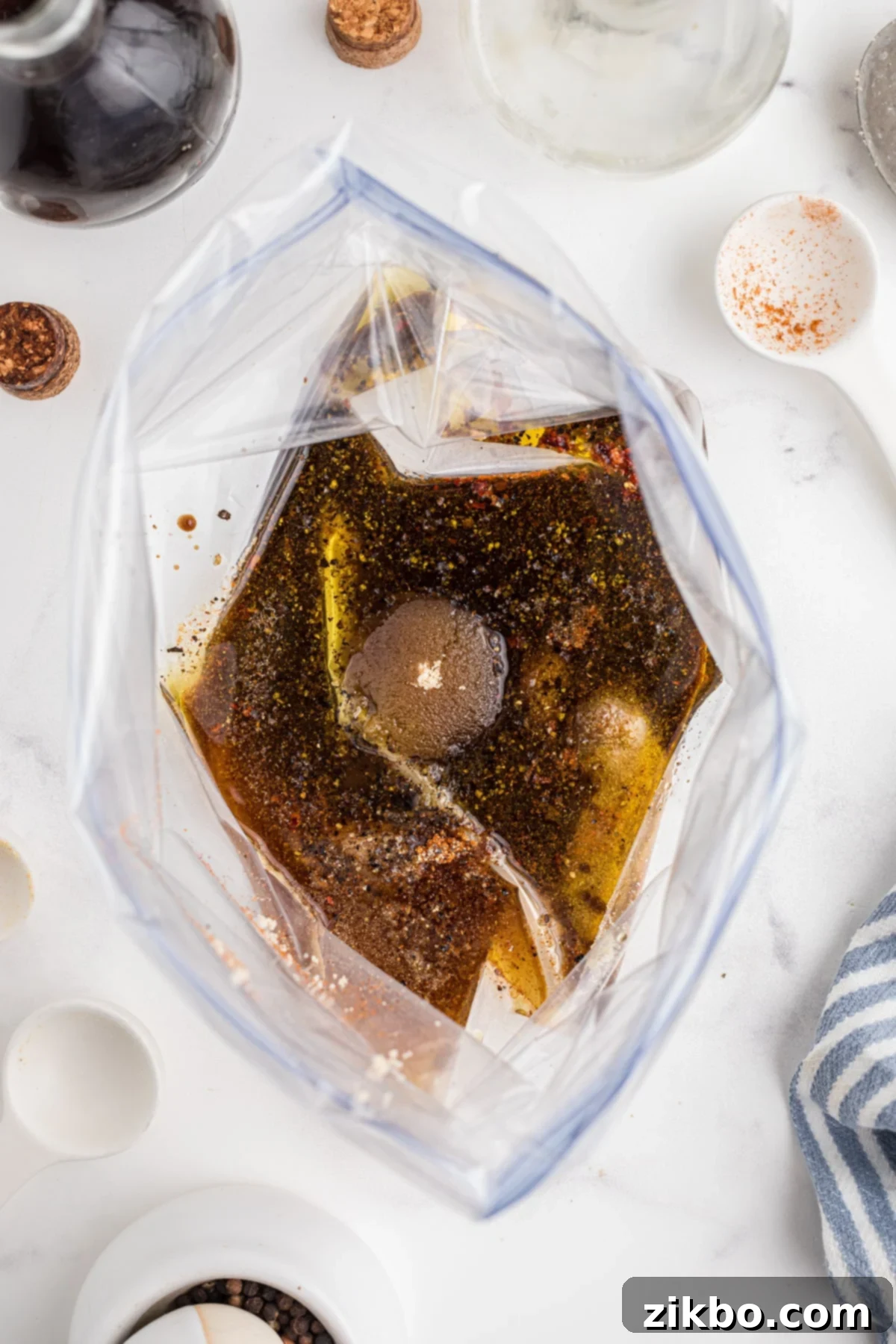
- Combine Ingredients: In a large zip-top freezer bag or a spacious mixing bowl, combine all the marinade ingredients. This includes:
- 5 tablespoons olive oil
- 2 tablespoons apple cider vinegar
- 2 tablespoons Worcestershire sauce
- 2 tablespoons light brown sugar
- 1 teaspoon Old Bay seasoning
- 1 teaspoon onion powder
- ½ teaspoon garlic powder
- ½ teaspoon red pepper flakes
Mix thoroughly until all ingredients are well combined and the brown sugar has dissolved. This ensures an even distribution of flavor.
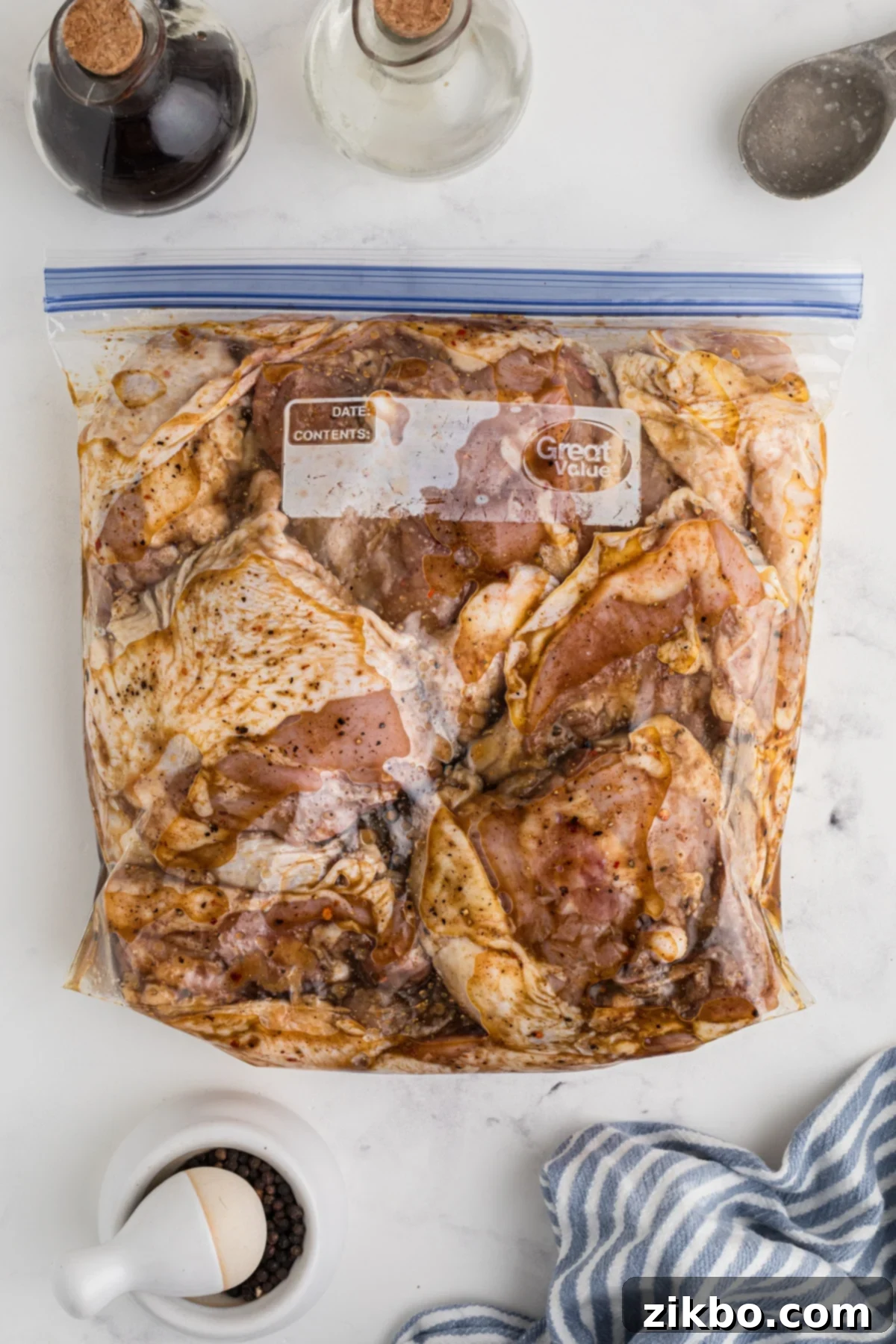
- Add Chicken and Massage: Carefully add 1-2 pounds of your chosen chicken cut (such as breasts, thighs, or tenders) to the bag or bowl. If using a bag, seal it tightly, pressing out as much air as possible. Use your hands to gently massage the marinade into the meat, ensuring every piece is thoroughly coated. If using a bowl, stir vigorously, then cover it securely.
- Marinate for Flavor & Tenderness: Allow the chicken to marinate for the recommended duration. The time you choose will depend on how much flavor infusion you desire and your available time:
- At room temperature: For a quick flavor boost, marinate for up to 90 minutes. Do not exceed this time for food safety reasons.
- In the refrigerator: For deeper flavor and enhanced tenderness, marinate in the refrigerator for a minimum of 2 hours and up to 24 hours. While some sources suggest up to 48 hours, marinating for longer than 24 hours can sometimes result in a slightly mushy texture due to the acid in the marinade breaking down the protein too much.
Ensure the chicken remains properly chilled if marinating for an extended period.
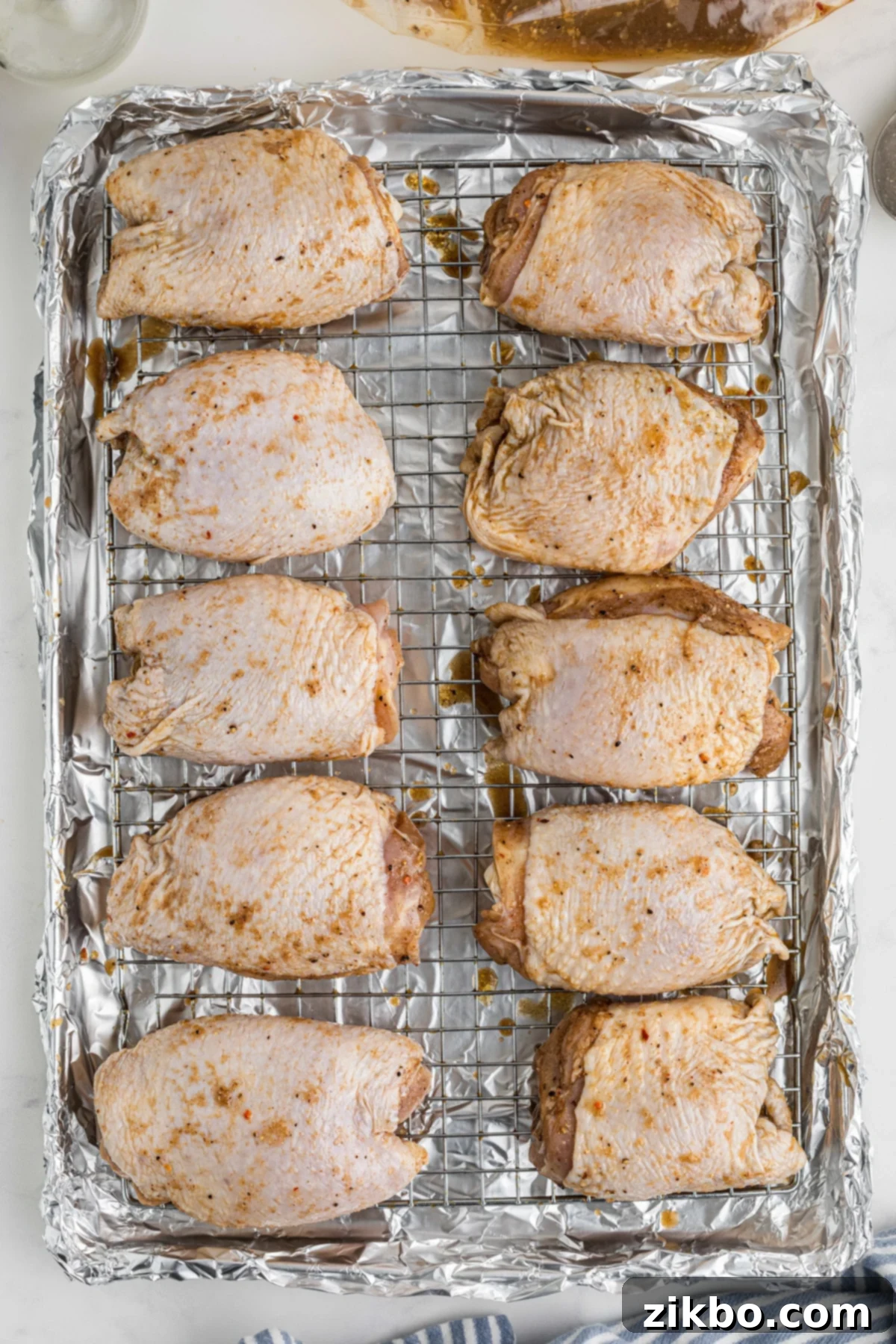
- Prepare for Cooking: Once marinating is complete, remove the chicken from the marinade, allowing any excess to drip off. Discard any remaining marinade that has been in contact with raw chicken (unless you plan to safely boil it into a sauce, as detailed below). Preheat your chosen cooking method – whether it’s your oven, grill, or air fryer – to the specified temperature.

- Cook to Perfection: Cook the chicken according to your preferred method until each piece reaches a minimum internal temperature of 165ºF (74ºC) at its thickest portion. Always use a reliable meat thermometer to ensure food safety and prevent overcooking, which can lead to dry chicken.
For detailed instructions and specific cooking times tailored to different cuts and methods, please refer to the section below. Remember to rest your chicken for 5-10 minutes after cooking to allow the juices to redistribute, resulting in even juicier meat.
Mastering Your Method: Ways to Cook Marinated Chicken
This versatile marinade shines across various cooking techniques, promising delicious results every time. Here’s how to cook your marinated chicken perfectly using popular methods:
- Baked or Roasted Chicken: A hands-off method that yields beautifully cooked chicken.
- Preheat your oven to a robust 425ºF (220ºC).
- Line a baking sheet with foil for easy cleanup, and place a wire baking rack on top (if available). A rack ensures even air circulation, leading to more uniform browning and cooking.
- Arrange the marinated chicken pieces on the rack, ensuring they are not overcrowded to allow for proper air flow.
- Bake until each piece reaches a minimum internal temperature of 165ºF (74ºC). Cooking times will vary significantly based on the cut and thickness of the chicken.
- Once cooked, remove from the oven and allow the chicken to rest for about 5-10 minutes. This resting period is crucial as it allows the juices to redistribute throughout the meat, resulting in a more tender and juicy final product. For dark meat like thighs, resting might even allow the internal temperature to climb to 170ºF (77ºC), which many find ideal for texture.
- Chicken thighs, bone-in, skin-on: Approximately 35-45 minutes.
- Chicken breasts, boneless and skinless: About 19-25 minutes, depending on size and thickness.
- Chicken breasts, bone-in, skin-on: 35-45 minutes.
- Chicken thighs, boneless and skinless: 20-30 minutes.
- Chicken tenders: Approximately 15-22 minutes.
- Grilled Chicken: Achieve that perfect smoky flavor and beautiful grill marks.
- Preheat your propane or charcoal grill to medium-high heat. Ensure the grates are clean, and lightly oil them to prevent sticking.
- Place the marinated chicken pieces directly on the hot grates.
- Cook for 5-7 minutes per side, turning only once to ensure good grill marks and even cooking.
- Continue cooking until each piece reaches a minimum internal temperature of 165ºF (74ºC).
- Remove the chicken from the heat and let it rest for 5-10 minutes before slicing or serving. This allows the juices to settle back into the meat, ensuring a tender and moist result.
- Air Fried Chicken: For crispy exterior and juicy interior with minimal oil.
- Preheat your air fryer to 390ºF (199ºC).
- Place 3-4 pieces of marinated chicken in the air fryer basket, ensuring not to overcrowd it. Cook in batches if necessary to allow hot air to circulate properly for even crisping.
- Cook until each piece achieves an internal temperature of 165ºF (74ºC). For even cooking and crispiness, remember to flip the chicken halfway through the cooking time.
- Once done, remove the chicken from the air fryer and allow it to rest for 5 minutes before serving.
- Chicken thighs: 12-14 minutes.
- Chicken breasts: 12-16 minutes, turning halfway through.
- Chicken wings: 10-13 minutes.
- Chicken tenders: 6-10 minutes, turning halfway through.
Always verify doneness with a meat thermometer, as cooking times are estimates and can vary based on the size and thickness of your chicken, as well as the specific appliance used.
Transform Leftover Marinade into a Delicious Glaze or Sauce
While it’s important to discard marinade that has been in contact with raw meat, you can safely transform any *unused* portions of the marinade, or even the used marinade *if properly handled and cooked*, into a flavorful glaze or sauce. This adds another layer of deliciousness to your cooked chicken. Here’s how to do it safely:
- Prepare the Sauce Base: Pour the excess marinade into a small saucepan. If the marinade is too thick or you want a thinner sauce, add about ½ to ¾ cup of water, chicken broth, or even a splash of wine to thin it to your desired consistency.
- Bring to a Rolling Boil: Place the saucepan over medium-high heat and bring the mixture to a vigorous, rolling boil. This is a critical step for food safety.
- Maintain High Heat: Once boiling, maintain the heat and allow the sauce to simmer for at least 2 minutes. It is absolutely essential to ensure the sauce reaches and maintains a minimum temperature of 165ºF (74ºC) for a sustained period to effectively kill any bacteria that might have been present from the raw chicken. Using a food thermometer to check the temperature of the simmering sauce is highly recommended.
- Reduce to Desired Consistency: After safely boiling, reduce the heat to low and allow the sauce to gently simmer. Continue simmering, stirring occasionally, until it reduces and thickens to your preferred glaze or sauce consistency. The longer it simmers, the more concentrated and thicker it will become.
- Serve and Enjoy: Once reduced, spoon this flavorful glaze over your freshly cooked chicken. It makes a fantastic accompaniment, adding an extra layer of moisture and an intensified flavor profile to your meal.
Important Note on Safety: Unless you are preparing the marinade specifically as a sauce base (meaning it has not touched raw meat), it should generally be discarded after the chicken has been removed. However, if you choose to turn a used marinade into a sauce, it is paramount to bring the sauce to a minimum internal temperature of 165ºF (74ºC) and sustain it for at least 2 minutes to eliminate any bacteria remaining from the raw chicken. Never use raw marinade as a dipping sauce.
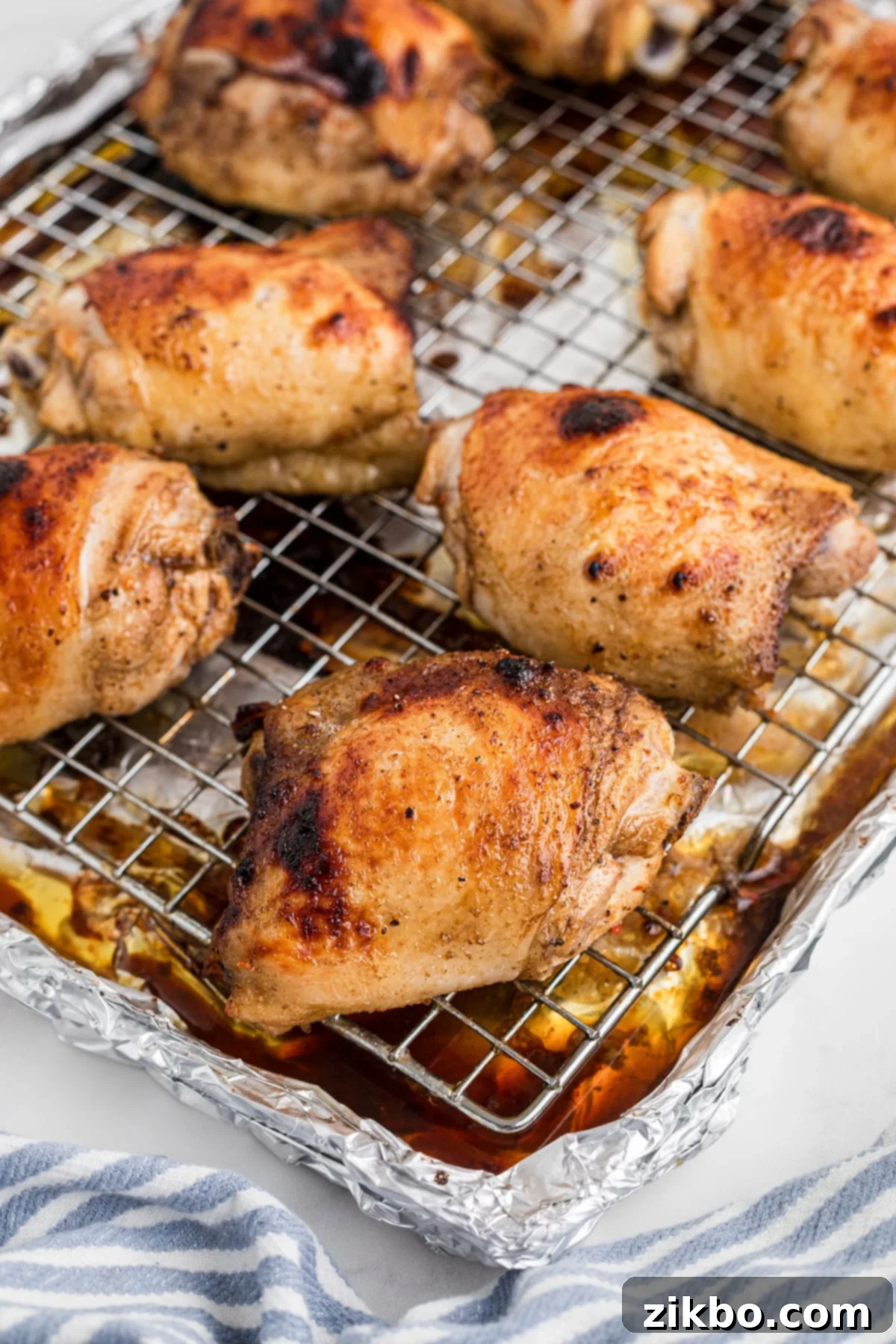
Customizing Your Marinade: Smart Substitutions
One of the best aspects of this chicken marinade recipe is its flexibility. Feel free to experiment with substitutions to tailor the flavors to your preference or to use ingredients you already have on hand. Here are some excellent alternatives:
- Acid Alternatives: While apple cider vinegar provides a lovely tang, you can easily swap it for other acidic ingredients.
- White Vinegar: Offers a sharper, more straightforward tang.
- Citrus Juice: Lemon, lime, or orange juice can add a brighter, fresher, and more aromatic zest. Lemon juice is particularly great for a zesty chicken.
- Balsamic Vinegar: Provides a sweeter, richer, and more complex acidic note, ideal for a deeper flavor profile.
- White Wine Vinegar: Offers a milder, slightly fruitier acidity.
- Savory Enhancements (Umami Boosters): For that deep, savory umami flavor, Worcestershire sauce is fantastic, but other options work beautifully.
- Soy Sauce: A classic for savory depth, providing salty, umami notes. Choose low-sodium if preferred.
- Coconut Aminos: A soy-free, gluten-free alternative to soy sauce, with a slightly sweeter, milder umami flavor.
- Tamari: A gluten-free soy sauce option with a rich, savory taste.
- Fish Sauce: For a truly intense umami punch, use sparingly as it has a distinct flavor.
- Oyster Sauce: Offers a sweet, salty, and savory profile, often used in Asian cuisine.
- Spice and Herb Variations: The dried seasonings in this recipe are foundational, but don’t hesitate to incorporate fresh herbs for an aromatic lift.
- Fresh Herbs: Rosemary adds a piney, earthy aroma; thyme offers a subtle, savory earthiness; sage brings a warm, peppery note; and tarragon delivers a unique, slightly licorice-like flavor. Finely chop about 1-2 tablespoons of fresh herbs per recipe.
- Smoked Paprika: For a smoky depth and a beautiful reddish hue.
- Chili Powder/Cumin: For a more Southwestern or Mexican-inspired flavor.
- Dijon Mustard: If you enjoy the pungent, tangy kick of Dijon, a teaspoon or two can dramatically boost the overall flavor complexity of the marinade, especially when paired with chicken. It also helps to emulsify the marinade slightly.
- Protein Choices: While this recipe was perfected for chicken, its balanced flavor profile makes it suitable for a wide range of proteins.
- Pork: Excellent for chops, tenderloins, or even slow-cooked cuts.
- Salmon or Shrimp: The marinade’s ingredients can surprisingly enhance seafood, just ensure shorter marinating times for delicate proteins (e.g., 20-30 minutes for shrimp).
- Other Poultry: Turkey tenderloins or duck breasts would also benefit from this marinade.
- Oil Alternatives: Extra virgin olive oil is a great choice, but any high-heat, neutral-flavored oil can be used.
- Avocado Oil: High smoke point, neutral flavor, and heart-healthy.
- Vegetable Oil / Canola Oil: Inexpensive and very neutral.
- Peanut Oil: Adds a subtle nutty flavor and has a high smoke point, great for grilling.
Don’t be afraid to experiment! The goal is to create a marinade that perfectly suits your taste and the ingredients you have on hand.
No Old Bay Seasoning? No Problem!
Old Bay seasoning is truly a beloved staple, especially known for its fantastic pairing with seafood like shrimp, salmon, and crab. Its unique blend of savory, slightly spicy, and aromatic notes also makes it surprisingly delicious with chicken. If your spice drawer isn’t currently stocked with Old Bay, there’s no need to fret!
For those who love to DIY and have a well-stocked spice cabinet, you can easily create your own version. This homemade Old Bay seasoning recipe is an excellent option, often made by blending ingredients like celery salt, paprika, black pepper, red pepper, and other spices in a high-powered blender or spice mill. Alternatively, if you’re looking for a quick substitute, a blend of garlic powder, onion powder, and a pinch of smoked paprika can offer a similar savory-sweet profile, although it won’t be an exact match, it will still yield delicious results.
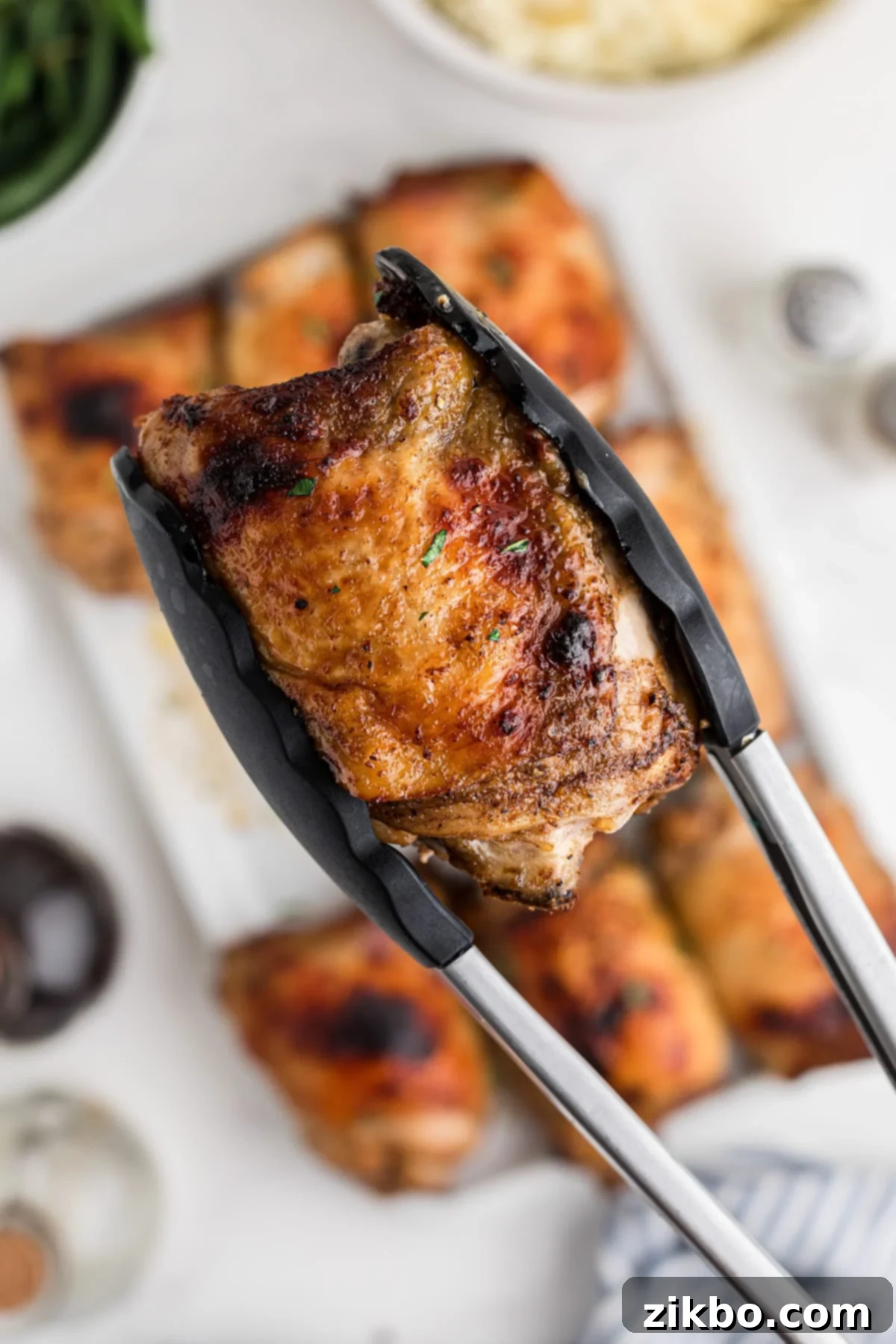
Meal Prep Mastery: Can I Prep the Marinade in Advance?
Absolutely! This marinade is incredibly convenient for meal planning and preparing ahead, especially if you’re hosting a cookout, a party, or simply aiming for a stress-free weeknight dinner. Proper advance preparation can save you valuable time when you’re ready to cook.
The marinade itself (all the liquid and spice ingredients mixed together) can be prepared **up to 3 days ahead of time** and stored in an airtight container in the refrigerator. This allows the flavors to meld and deepen, creating an even more potent marinade. However, it’s crucial to remember that you should only add chicken (or any other meats) to the marinade if you plan on preparing and cooking that meat within the next 24 hours. Marinating meat for longer than 24 hours can sometimes result in an undesirably mushy texture due to the acids in the marinade. Always ensure proper food safety by keeping marinated meats refrigerated.
Freezing Marinade & Marinated Chicken for Future Meals
For the ultimate meal prep convenience, this marinade, combined with chicken, freezes exceptionally well. This method is perfect for stocking your freezer with delicious, ready-to-cook meals.
- Prepare and Combine: Prepare the marinade as instructed and add your chicken (or desired protein, such as pork chops or fish fillets) to a large, heavy-duty freezer bag. Ensure the chicken is fully coated.
- Seal and Label: Remove as much air as possible from the freezer bag before sealing it tightly. Label the bag clearly with the date and contents (e.g., “Chicken Marinade – 09/2025”).
- Freeze Until Solid: Lay the bag flat in your freezer until it’s completely solid. This helps with efficient storage.
- Storage Duration: Store the frozen marinated chicken for up to 3 months for best quality and flavor.
- Thawing: When you’re ready to cook, transfer the freezer bag to a baking pan or a large bowl in your refrigerator about 1-2 days before you plan to cook the chicken. The pan will catch any potential leaks during thawing. Do not thaw at room temperature.
- Cook and Discard: Once thawed, remove the chicken from the marinade and cook as desired using your preferred method (grilling, baking, air frying). Remember to discard any leftover marinade that touched the raw chicken.
- Serve and Enjoy: Relish your perfectly prepped, flavorful meal!
Recipe FAQs: Your Marinade Questions Answered
The ideal window for marinating chicken is generally between 2 to 12 hours. This timeframe allows the flavors to deeply penetrate the meat and for the acid to tenderize the chicken without compromising its texture. However, the exact duration can be quite flexible depending on your needs.
If you’re short on time, even a quick 15-20 minutes of marinating at room temperature can make a noticeable difference in flavor, especially for thinner cuts like chicken tenders. If you have more time to spare, aim for at least 4-6 hours in the refrigerator for a richer taste. It’s crucial to be mindful not to exceed 24 hours in the refrigerator for this particular marinade, as the acid (apple cider vinegar) can begin to break down the proteins too much, potentially leading to a slightly mushy or stringy texture. According to the USDA, meat and poultry can be safely marinated in the refrigerator for up to 2 days, but many home cooks prefer to stick to 24 hours for chicken to maintain optimal texture.
*Source: How long can meat and poultry be marinated? – USDA
If you don’t have this popular spice blend readily available, you have a couple of excellent options. You can easily make your own homemade Old Bay seasoning from common spices. A typical homemade blend includes ingredients like crushed bay leaves, celery seed (which is key to Old Bay’s flavor), paprika (both sweet and smoked if available), ground dry mustard, ginger, white pepper, and a good pinch of salt. Alternatively, if you prefer a simpler substitution, a combination of equal parts garlic powder, onion powder, a dash of cayenne pepper for heat, and a pinch of celery salt can provide a somewhat similar savory and aromatic profile, although it won’t be an exact replica, it will still enhance your chicken deliciously.
Absolutely! This marinade is incredibly versatile and works wonderfully with all cuts of chicken, including bone-in, skin-on pieces like thighs, legs, and even whole chickens (though whole chickens will need more marinade and longer marinating times). The skin helps to protect the meat and crisps up beautifully, while the bone contributes to a richer flavor and helps the chicken cook more evenly and retain moisture. Just ensure the marinade is thoroughly massaged into all surfaces of the chicken, including under the skin if possible, for maximum flavor penetration.
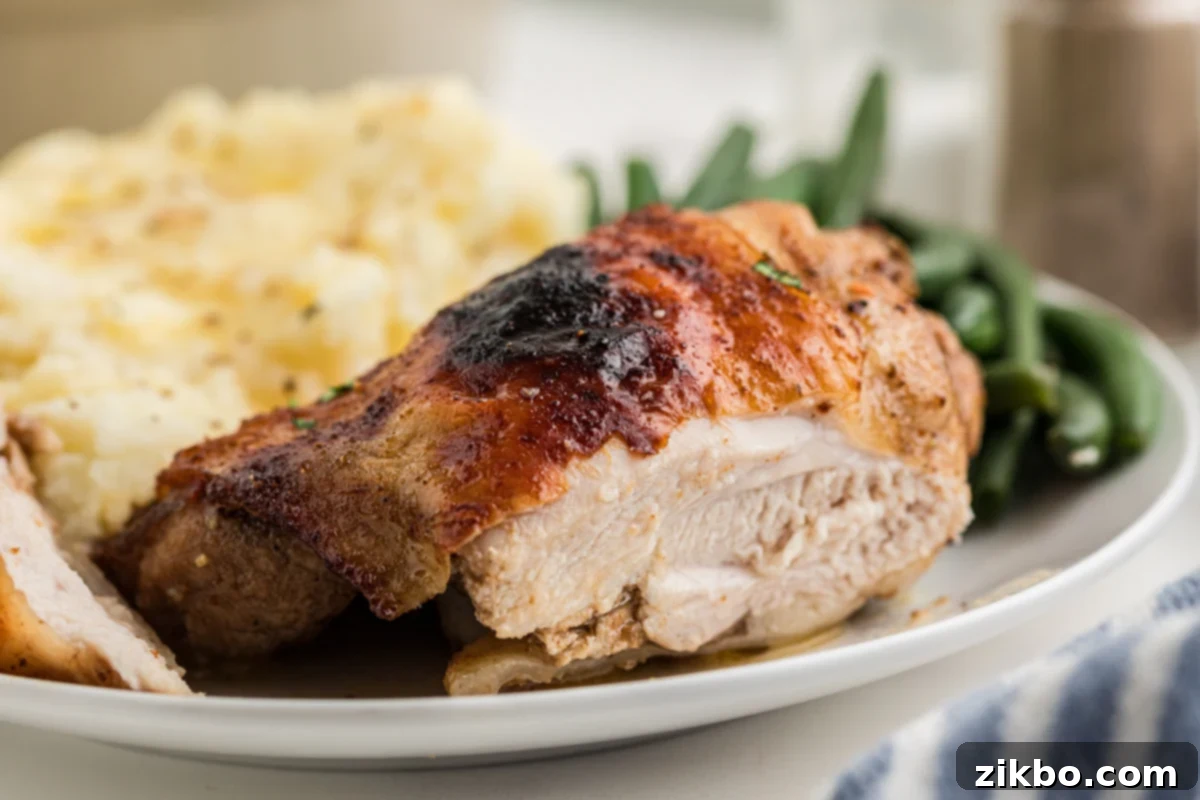
If you loved this easy recipe for chicken marinade and experienced how it transforms your meals, please let me know by leaving a 5-star review in the recipe card below or by sharing your thoughts in the comments! Your feedback helps other home cooks discover this amazing recipe. You can also tag me on Instagram @dashfordinner to share your delicious creations!
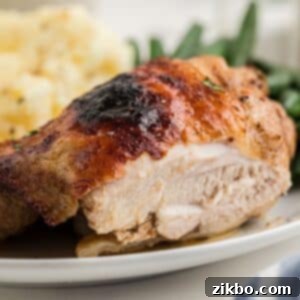
Flavorful Chicken Marinade (Grill, Bake, or Air Fry)
Print
Pin
Rate
Ingredients
- 5 tablespoons olive oil
- 2 tablespoons apple cider vinegar
- 2 tablespoons Worcestershire sauce
- 2 tablespoons light brown sugar
- 1 teaspoon Old Bay seasoning*
- 1 teaspoon onion powder
- ½ teaspoon garlic powder
- ½ teaspoon red pepper flakes
Instructions
-
Combine all marinade ingredients (olive oil, apple cider vinegar, Worcestershire sauce, brown sugar, Old Bay seasoning, onion powder, garlic powder, and red pepper flakes) in a large bowl or a zip-top freezer bag.
-
Mix well until thoroughly combined and the sugar has dissolved, ensuring a homogeneous marinade.
-
Add 1-2 pounds of chicken (or your choice of meat**) to the marinade. Seal the bag or cover the bowl, then massage the marinade into the meat to ensure every piece is fully coated.
-
Marinate the chicken for at least 30 minutes, or for best results, refrigerate for 2 to 24 hours. For marinating sessions exceeding 90 minutes, always keep the chicken refrigerated.
-
When ready to cook, remove the chicken from the marinade, allowing excess to drip off. Discard the leftover marinade. Preheat your preferred cooking method (oven, grill, air fryer, etc.) to the appropriate temperature.
-
Cook chicken as desired*** until it reaches a safe internal temperature of 165ºF (74ºC) at its thickest part. Rest for 5-10 minutes before serving for maximum juiciness.
Notes
**Versatile Marinade Uses: This marinade is incredibly versatile and can be used for a variety of proteins and cooking methods:
- Chicken: Excellent for all cuts including breasts, thighs, wings, and tenders.
- Pork: Perfect for chops, tenderloins, or even country-style ribs.
- Salmon: Provides a fantastic flavor boost for fish.
- Cooking Methods: Ideal for grilling, baking, or air frying.
***Chicken Cooking Guidelines: While you can use your favorite cooking method, for detailed cooking times and temperatures for oven, air fryer, and grill, please refer to the comprehensive “Ways to Cook Marinated Chicken” section above on this page. Always use a meat thermometer to ensure chicken reaches an internal temperature of 165ºF (74ºC).
Freezing for Future Meals: To prepare ahead, combine the marinade and your chosen protein in a freezer-safe bag. Label it with the date and freeze for up to 3 months. Thaw completely in the refrigerator before cooking as desired, and remember to discard any leftover marinade.
Nutritional Information Disclaimer: Please note that the provided nutritional information calculates the marinade “as is.” Since the meat will absorb only a small fraction of the marinade’s caloric and nutritional value, and the majority of the liquid is discarded, it is challenging to provide an exact nutritional breakdown for the cooked chicken. Therefore, this information serves as an estimate for the marinade itself.
Nutrition
Please note that some of my blog posts here at Dash for Dinner may contain affiliate links. If you make a purchase through these links, I will get a small commission at no additional cost to you. Please see my Disclaimer for more information.
